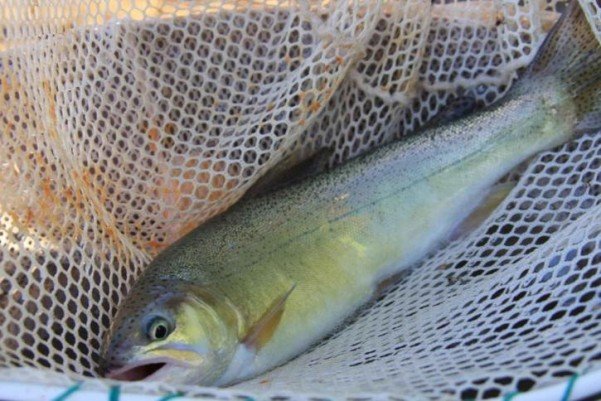For anglers experienced in fishing for stream trout in streams, the thought of catching their favorite trout species in a lake may seem a bit odd. However, in many areas of the U.S. and Canada, lakes are stocked with stream trout and it takes a different approach to be successful.
In streams, experienced trout anglers have a good idea where to find trout, but lake fishing for stream trout offers new challenges in locating and catching fish. Here is the best way to catch stream trout in lakes.
Location
Stream trout living in streams or creeks are most commonly found along the seams, where slow water meets fast water, waiting for food to come to them. In lakes, stream trout must go out in search of their food, so they are often cruising large areas of water looking for their next meal.
It is important to note that there are basically two types of lakes that hold stream trout and each requires a different approach. The first is a cold-water lake, which maintains temperatures cold enough to support stream trout like browns, brookies and rainbows. In these lakes, trout can be found just about anywhere, from shallow water to deep, depending where food can be found.
The second type of stream-trout lake is called a two-story lake. These lakes do not maintain cold enough temperatures to support stream trout at their upper levels, but the deeper water does stay cold enough for stream trout. During the warmer months, trout will mainly be found in deep water.
Approach
The two types of trout lakes require different approaches during the summer months, but in both, the best times to fish are the hours around dawn and dusk. That is not to say that fish cannot be caught outside of these hours, it just means that they are typically more active during the low-light hours.
In a cold-water trout lake, anglers should focus on insect hatches, much the way they would in a stream. The evening hatches are often the best times to find trout. Watch for rises and actively feeding fish; then match the hatch. If you do not see any hatch activity, try small spinners or spoons. This can be an effective way to cover a large area of water and locate fish. Another good strategy is to fish worms or night crawlers below a slip bobber. Trout love worms and will eagerly hit them when offered.
In two-story lakes, the best strategy is significantly different. Here, trolling with spoons or spinners is the most effective technique to find and catch fish. Since the fish will be deep, 30-40 feet or more, you will likely need some assistance to get your baits down deep. Lead-core line or cowbells will help you get your bait down to the level where the trout are cruising for food.
Gear
Fly-rods or light action rods are best for cold-water trout lakes. Test-line of 4 to 6 pounds is more than enough for most stream trout.
When trolling in two-story lakes, use heavier rods, with 6 to 8-pound test or lead-core line. Lead-core line takes a much heavier rod and reel to handle it effectively.
Photo credit: Public-domain-image.com








